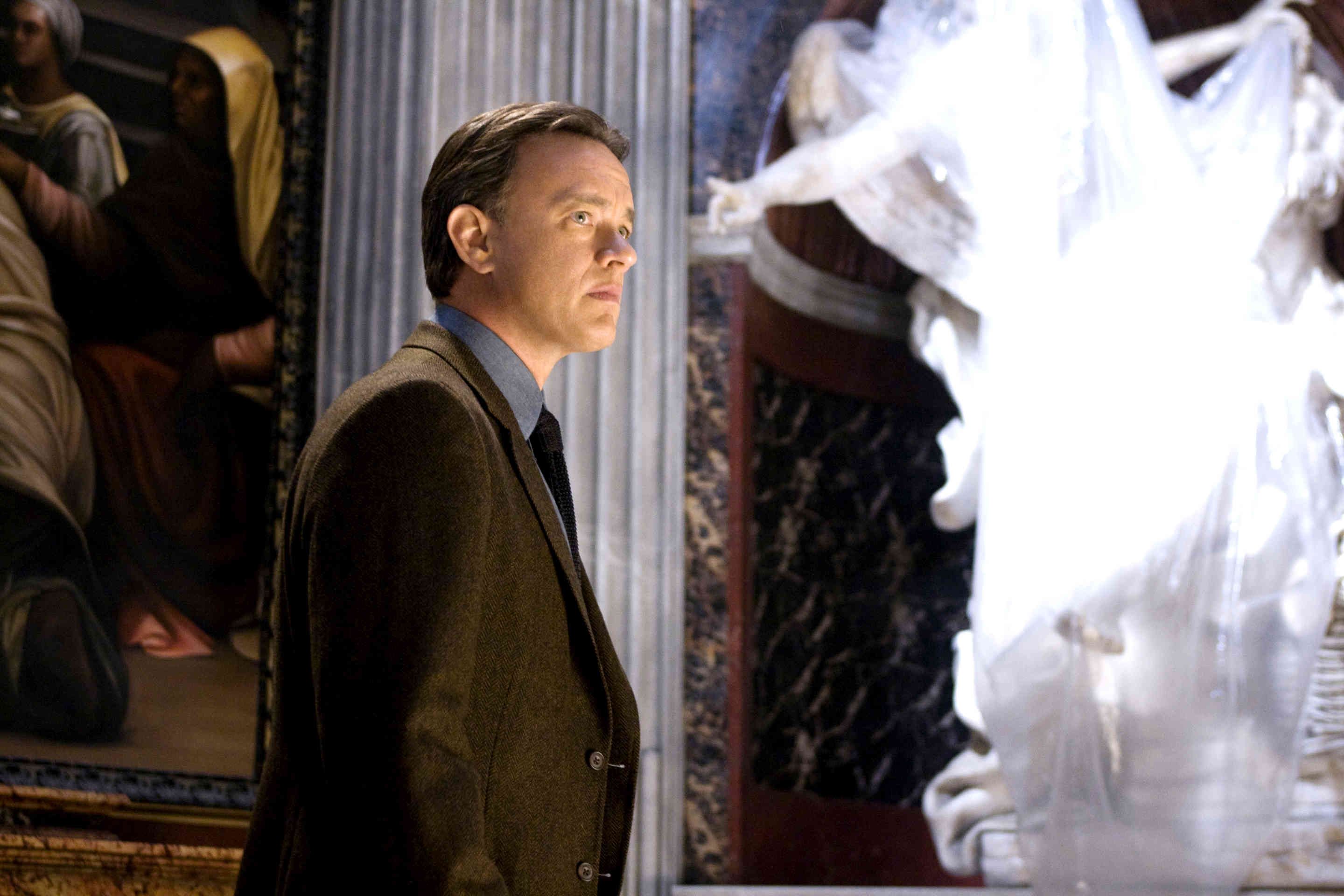
Ever tried to imagine how would the script for The Big Sleep (1946) look like if the book itself was by Dan Brown, and the adaptation by Akiva Goldsman …? My guess is it would read something along these lines:
MARLOWE (to CARMEN): I can see you’re sucking your thumb, kid. I’ll tell you what that means. It’s a fixation. That’s a Freudian term for an exaggerated attachment to an object or a group of objects, animate or inanimate.
CARMEN: Let me sit on your lap. I know you are standing. But I’m planning to make a pass on you. You’re cute.
MARLOWE: My cuteness grows proportionally to the gradual passing of time.
Now, compared to what made it to the screen in Ron Howard’s Angels & Demons (2009), that passage reads like a steamy sex thriller. There is no sex in Angels…, and not only because one half of its cast wears habits, the other is too busy holding on to their rifles, and what’s left is being played by Tom Hanks. There is no sex, because there are no people. The few pitiful stabs at being funny are so misguided (“Read it for me, and I will buy you a pack of smokes”), that we don’t even welcome them. We just want the whole tiresome experience to be over.
As everyone knows, this is an adventure story, which basic mechanism is not unlike the one Spielberg used in his Indiana Jones movies. One clue leads to another; the links are being made possible by the protagonist’s knowledge of the Western civilization. Fair enough. But where doctor Jones was surrounded with clues, attacked by them, seduced by them, professor Robert Langdon merely registers them, and goes on with his business. His fingertips are magnetic; clues gravitate towards them (maybe it’s the gimmicky Mickey Mouse watch he wears, the only clue we are invited to follow freely). When he walks into a library, there’s no scholarly awe, no love of old volumes – nothing that made the library so magnetic in The Name of the Rose (1986). Langdon uses 16th Century manuscripts the way most of us use Wikipedia. He opens them on the right page, hits the right clue, and closes them down.
Listening to Langdon in this film is like listening to a voice-over, and not only because Howard doesn’t seem to care about how far away from the camera Tom Hanks is positioned at a given moment. The voice is there, same volume all the time, describing everything that happens and not doing much else. I’m not sure if what we hear in this movie even qualifies as dialogue. Feedback seems more accurate. Actually, when Langdon says to the Pope-to-be, Carmelengo Patrick McKenna (Ewan McGregor): “St. Peter. The first pope. He was crucified with his head upside down”, I wondered why doesn’t Carmelengo punch Langdon in the face for assuming he doesn't know that stuff.
But then, I have only myself to blame. The first clue pointing to the EXIT sign was to be found in the first few minutes of the film, literally staring in my face. What I mean is the torn-out, bloody eyeball one doctor Vittoria Vetra (Ayelet Zurer) finds on the laboratory floor. It made me think of the cut-off ear in Blue Velvet (1986), and about how scary one can get with such a detail if one really wants to. Angels & Demons doesn’t care for “scary” any more than it does for “sexy”. It’s a machine. An uninspired machine. A corporate product.
How funny that it ends up being all the things it tried to pin on religion and science alike.





No comments:
Post a Comment